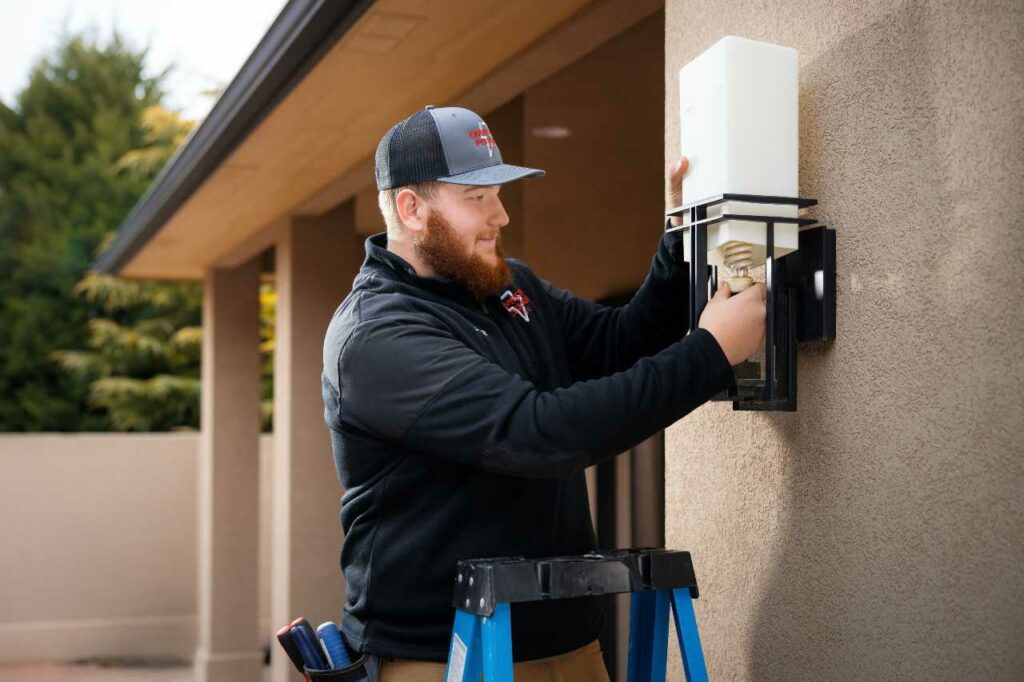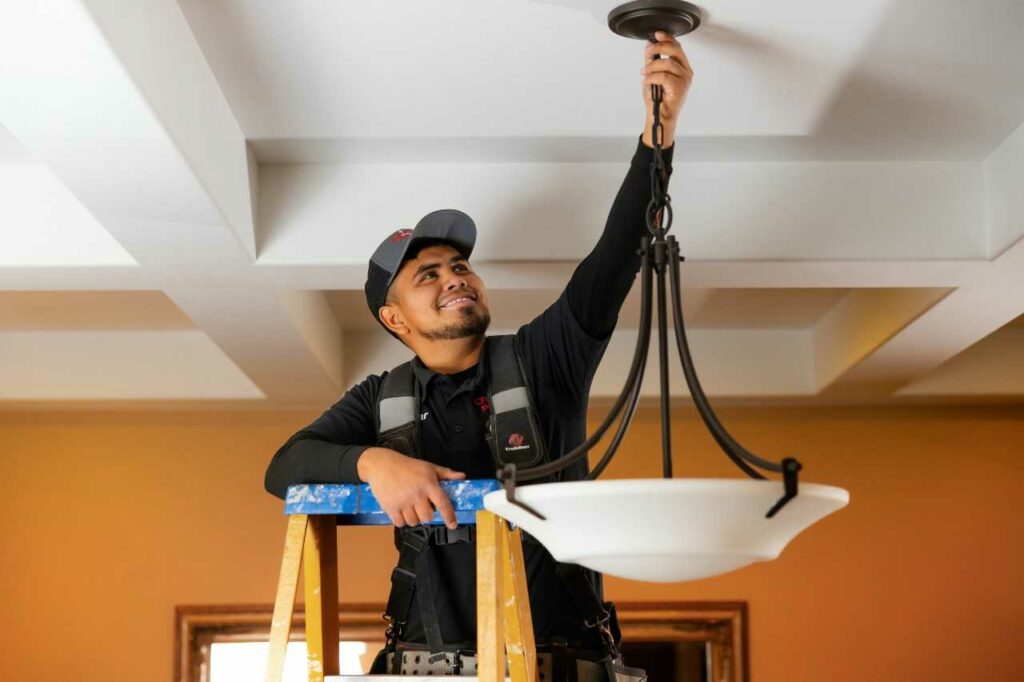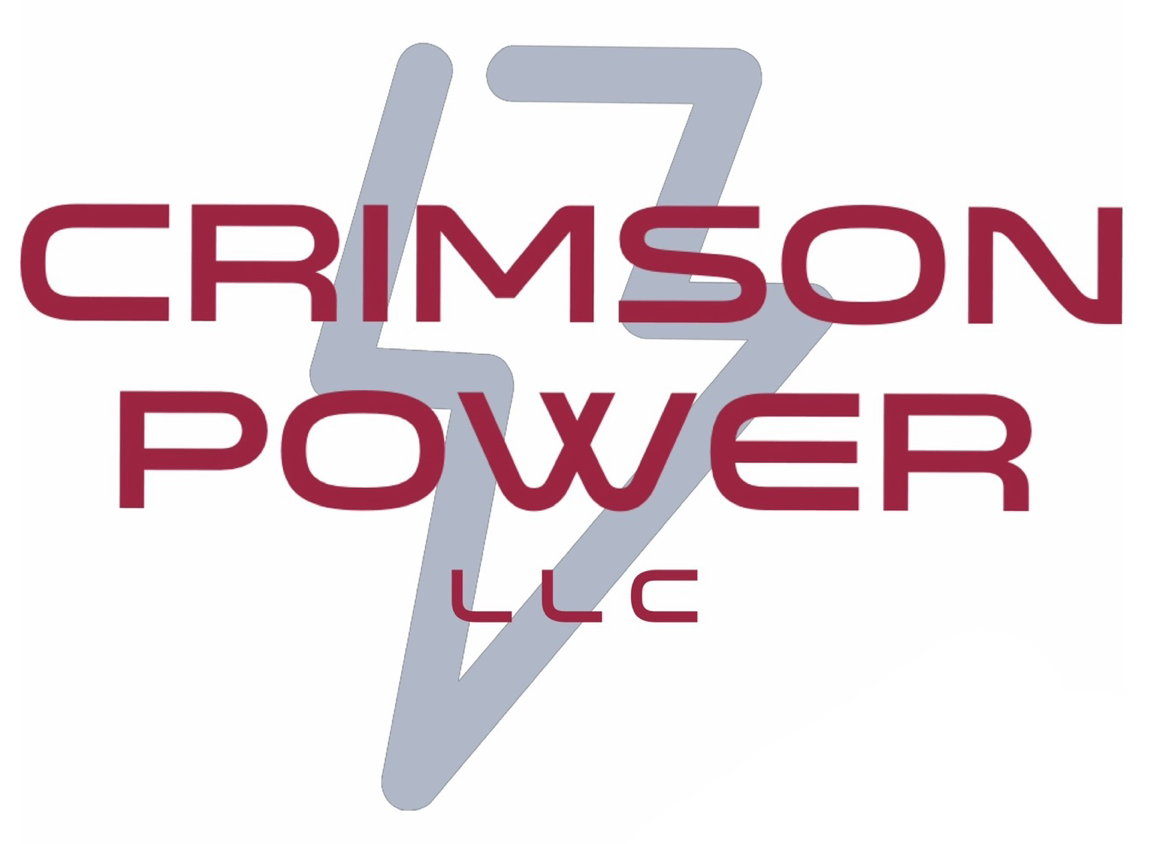If you’re embarking on a DIY project, you know that some are easier and faster than others. However, you must proceed cautiously on some DIY projects – not all are as safe as repainting or installing a shelf. If you’re attempting a home lighting installation, you need a profound understanding of safety protocols. The importance of safety in electrical work cannot be overstated, and electricians, such as those at Crimson Power LLC, adhere to stringent safety measures. These regulations ensure secure and effective lighting installations throughout your home, keeping you and your family well-lit and safe. Today, we will explore the critical safety protocols electricians follow, common risks during lighting installations, the role of professional training, and specific safety standards upheld by reputable professionals like Crimson Power.
The Importance of Safety in Electrical Installations

Few home projects are inherently dangerous; however, electrical installations, including lighting, are risky. Electricity is unforgiving and can lead to accidents, injuries, or property damage if you do not follow safety protocols meticulously. The primary goal of these safety measures is to protect both the electrician and end-user from potential hazards, ensuring a secure and reliable electrical system. This emphasis on safety is a legal and ethical obligation to provide a safe living environment.
Standard Safety Protocols Followed by Electricians
While electricians can have personalized preferences, there are many standard safety protocols that all industry professionals follow. Here are some of the top safety measures followed by electricians:
1. Shut Down the Power
One of the fundamental and first safety practices during a lighting installation is to shut down the power. If you are undertaking an electrical project, your first step is constantly turning the power off at the source. Electricians use circuit breakers or fuse boxes to cut off the power to their working area, ensuring they don’t encounter any live wires during installation. If you are attempting a DIY lighting installation, ensure that you have successfully turned off the power to the right areas before trying to move forward.
2. Use of Proper Tools
Professionals rely on the right tools for the job, ensuring they are in good working condition. The tools you are using must be appropriate for the task at hand to prevent accidents, injuries, and damage to the lighting fixtures. Buying the right tools that are the correct size and perform the functions you need is essential – consider it an investment not only in your safety but in your future electrical projects, too!
3. Personal Protective Equipment (PPE)
Wearing the correct personal protective equipment is a non-negotiable safety protocol for electricians and anyone doing electrical work. Electrical PPE includes insulated gloves, safety glasses, and, if necessary, flame-resistant clothing. PPE is a crucial barrier against potential electrical shocks or burns, keeping you safe in the case of an unexpected incident.
4. Identification and Labeling
Electricians follow protocols that help them identify and label wires accurately. This practice minimizes the risk of confusion during a complicated installation and ensures that connections are made correctly. Accurate wire labeling also helps in the future – if you need to change your electrical work, you can quickly identify your wires.
5. Safe Ladder Use
Electricians often work at height to install ceiling lights, fans, or other fixtures and have to run up and down ladders to do their work. When working with ladders, you must follow safe ladder practices. This includes securing the ladder correctly, maintaining a three-point contact, and avoiding overreaching or fast movements that could cause the ladder to wobble or even tumble.
Common Electrical Risks and Mitigation Strategies

If you’re undertaking electrical work or a lighting installation, here are several of the most common risks you should be aware of:
1. Possible Electrical Shocks
Electricians are trained to identify potential sources of electrical shocks and take measures to prevent them. This can include de-energizing circuits, using insulated tools, and maintaining a safe distance from live wires. If you’re doing electrical work, identify any live wires immediately, use proper tools, and know when to call a professional if the risk becomes too great.
2. Falling from a Ladder
Doing any DIY project at height poses a risk of falls; however, you have nothing to hold onto when doing electrical work on your ceiling, sconces, or fans. Electricians use proper fall protection equipment, such as harnesses, in such instances. They follow safe practices when working on ladders or elevated surfaces and work in pairs to ensure ladder stability.
3. Creating Fire Hazards
When working with electricity, sparks and fire are always risks. Fire risks during lighting installations can be mitigated using fixtures that meet safety standards, ensuring proper wire connections, and avoiding overloading your circuits.
The Role of Professional Training and Experience
Professional electricians undergo extensive training to acquire the necessary skills and knowledge to handle electrical installations safely. Their apprenticeships, training, and years of experience allow them to assess potential risks, troubleshoot complex issues, and make informed decisions during installations. Professional training ensures that electricians are up-to-date with the latest safety standards and regulations and have experience installing various fixtures and lighting. A practiced, trained hand dramatically reduces the likelihood of accidents.
Specific Safety Measures by Crimson Power LLC Technicians
Crimson Power LLC is a reputable, professional electrical service provider. At Crimson, we prioritize safety in all aspects of our work. Our technicians undergo continuous training, ensuring they are not only certified but that our continuing education keeps us well-versed in the latest safety protocols and technologies. Cameron, the owner of Crimson Power, emphasizes the importance of staying informed by regularly updating the team on the best practices for safe lighting installations. Here are a few of the critical ways our trained Crimson Power electricians prioritize safety:

1. Compliance with Electrical Codes
At Crimson Power, our technicians strictly adhere to electrical codes and regulations. This ensures the entire installation process, from start to finish, is up to code and that each of our lighting installations meets industry standards for safety and functionality.
2. Thorough Site Assessments
Before commencing any lighting installation project, our trained team of pros conducts thorough site assessments. We use this proactive process to identify potential hazards and implement specific safety measures tailored to each project.
3. Quality Assurance on Every Project
Crimson Power prioritizes quality assurance, ensuring every aspect of your lighting installation is meticulously checked for safety and reliability. Our commitment to quality minimizes the risk of post-installation issues and future safety hazards.
For those contemplating DIY projects, consider the value of the expertise and safety-conscious approach of professionals like Crimson Power LLC. Hiring a professional can become paramount in ensuring a secure and successful lighting installation.
How Crimson Power LLC Can Help You with Your Project
Effective lighting installation goes hand in hand with comprehensive safety protocols. If you want to ensure the safety and effectiveness of your lighting installations, Crimson Power LLC is here to help! Our trained technicians prioritize safety to protect themselves and homeowners from electrical hazards. Contact us for professional electrical services that prioritize your safety and satisfaction!

